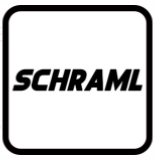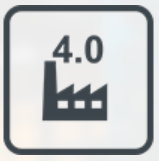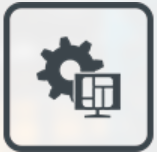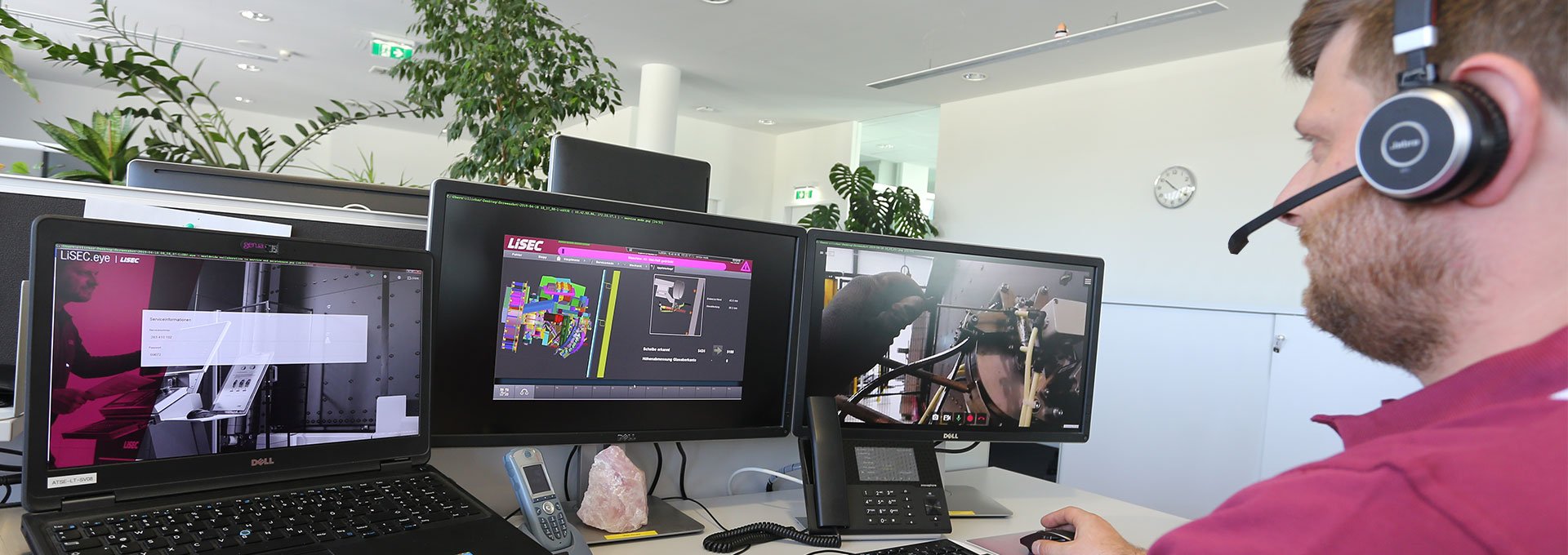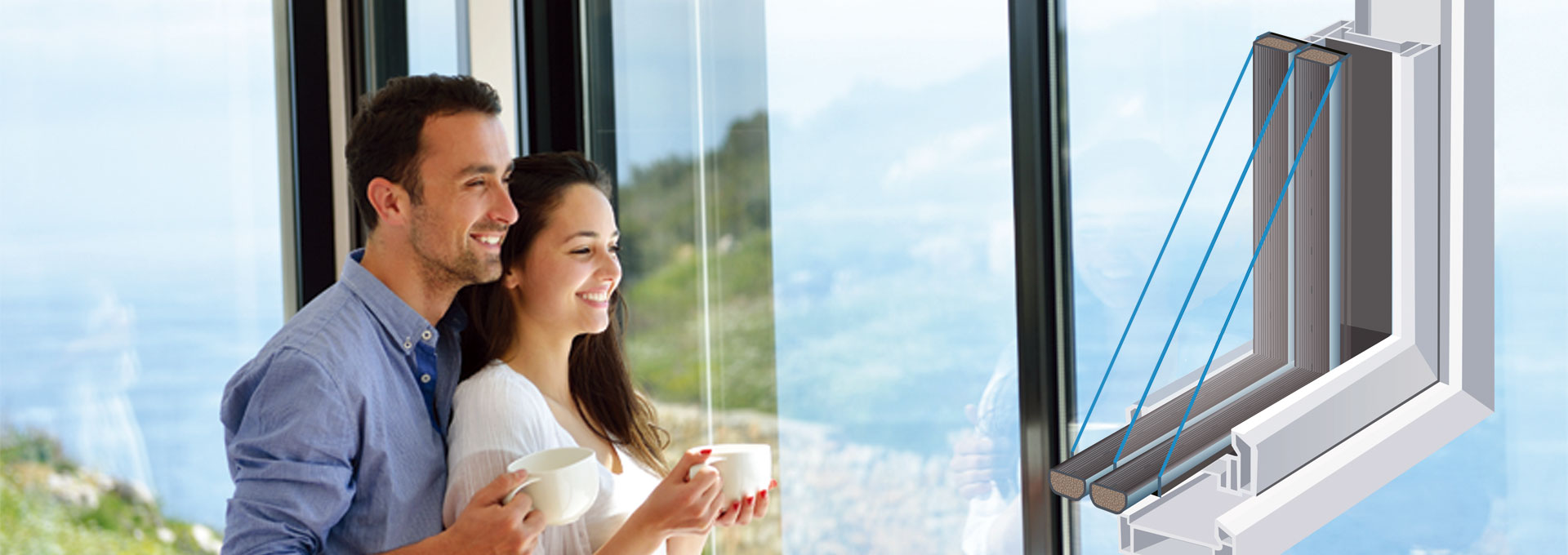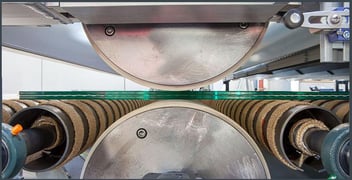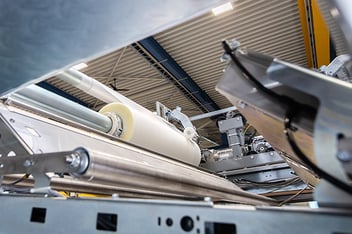During times when the number of suppliers in all industries (and also the glass industry, of course) is steadily increasing and the market is becoming more and more transparent at the same time, the importance of cost-effective production for higher profit margins increases tremendously. Furthermore, individual representatives of the glass industry can gain a certain competitive edge in this way and develop it accordingly.
But also in terms of cost effectiveness, it is important to take a holistic view of the production processes and analyse them in detail. In the case of lamination systems, the speed of pre-lamination should by no means be regarded as the only way of improving cost effectiveness with this process.
After a detailed analysis of all parameters, it quickly becomes clear that many measures relating to the machine and the control system have a significant influence on efficient production.
The four most important points for increasing performance are:
- Machine concept
- Foil placement, foil cutting
- Aligning the glass
- Pre-lamination
1. Machine concept
Cost effectiveness starts with the planning of your own company and by determining the development steps for the future.
The following seven questions are crucial here:
- Which glass products do you want to manufacture?
- What is the planned utilization?
- How do you want to develop?
- Which market segments do you want to develop or open up?
- Current and future proportion of glass sizes and glass quantities?
- Planned return on investment
- (Planned) cost of products
Points 5 to 7 in particular can be regarded as key questions. But it is only when all of these questions have been answered that the entrepreneurial direction will emerge. And only then can you make an informed decision about which lamination systems (width, performance and degree of automation) are the correct ones for your own operation.
The machine width is considerably dependent upon the glass size that a company wants to produce, and has a strong influence on the amount of the investment.
2. Foil placement / foil cutting
There are also different types of foils that are used to bond glass lites sheets together, depending on their composition, degree of moisture and thickness. Special soundproofing foils are very different from those that have been developed for bulletproof glass, for example, even if the basic functionality is the same. And these differences also have a significant impact on the price per square metre. For this reason, the foil itself also has a significant influence on the total production costs.

In terms of cost effectiveness, it is therefore of fundamental importance to place the foil economically and efficiently and to keep the foil overhang as small as possible so that foil wastage can be reduced. If a small glass with a width of 1 m is produced on a lamination system with a foil roll width of 2.6 m, for example, more foil wastage will occur. Wrinkle-free intermediate storage (for example with a foil shuttle) is also essential for this, so that the foil can be reused at a later point in time and overall costs / foil wastage are significantly reduced.
3. Glass alignment
Glass alignment is the real “bottleneck” of a lamination system. The converter places the aligned glass onto the first glass and the foil. The availability of the glass sheets is particularly important when it comes to production speed with this process. However, the cycle time can only be improved with an optimal combination of design with regard to glass alignment and positioning accuracy, and stable automation and programming.
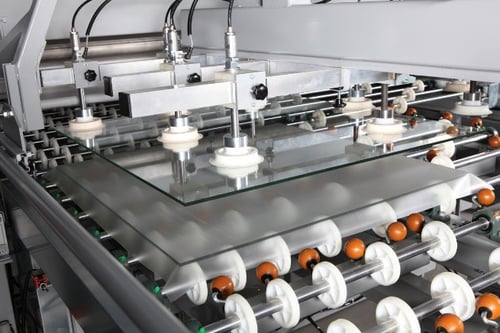
4. lamination
Another very important element with regard to efficiency is pre-lamination, which is the final link in the process chain and is often referred to as the heart of a lamination system.
.png?width=500&height=259&name=unnamed%20(1).png)
Pre-lamination has a significant influence on the quality of the finished laminate. However, in addition to the pre-lamination speed, the upstream process steps of glass alignment, foil placement and cutting must also intertwine in the best possible way to achieve optimal results.
Pre-lamination speed
The speed mainly depends on the energy supply, but also on the reproduction of the energy. Energy that is extracted from the laminated glass packages during pre-lamination must be recycled as quickly as possible in order to ensure efficient production. Otherwise the cycle time is reduced because the foil cannot warm up quickly enough due to an insufficient quantity of ambient energy.
There are three approaches with regard to this:
- Radiation - energy supply from IR radiator
- Convection - energy supply via the air
- A combination of radiation and convection
It has been shown in practice that a combination of both approaches is the most effective.

The use of a servo spindle drive guarantees accurate and finely adjusted parallel pressing, which keeps product quality at a high level and reduces waste to a minimum.
Conclusion:
Pre-lamination can be described as the “heart” of a lamination system. But when it comes to increasing efficiency, there are many factors to consider. Only after a detailed analysis of all parameters should the decision be made as to which lamination system is right for your own operation. But the foils themselves, as well as the processes of foil placement and cutting and glass alignment, also have a fundamental influence on the overall cost effectiveness of the lamination process.







